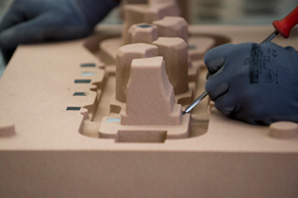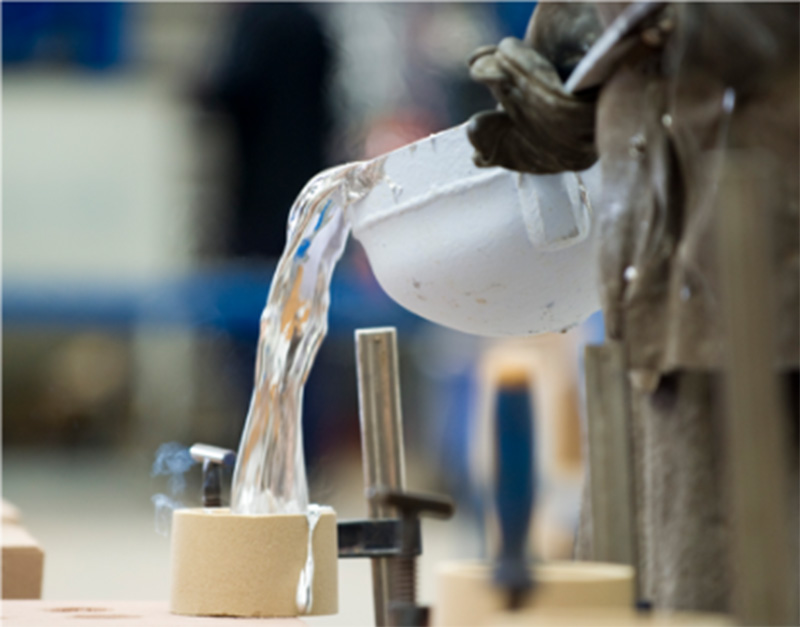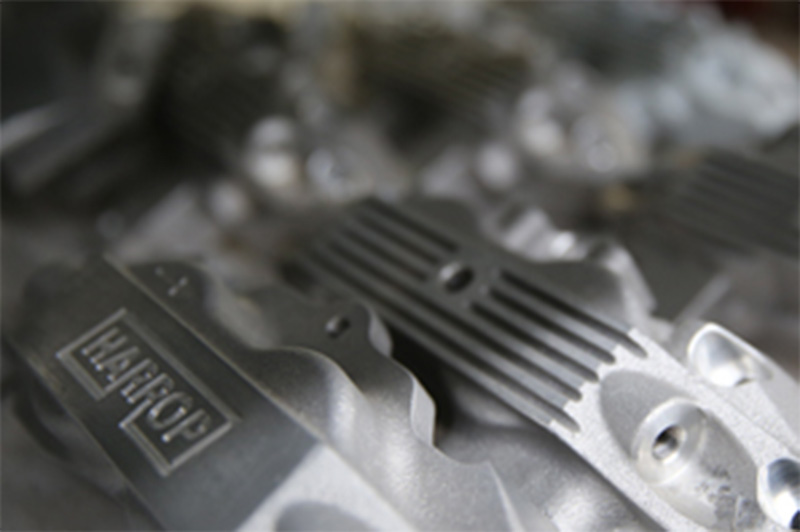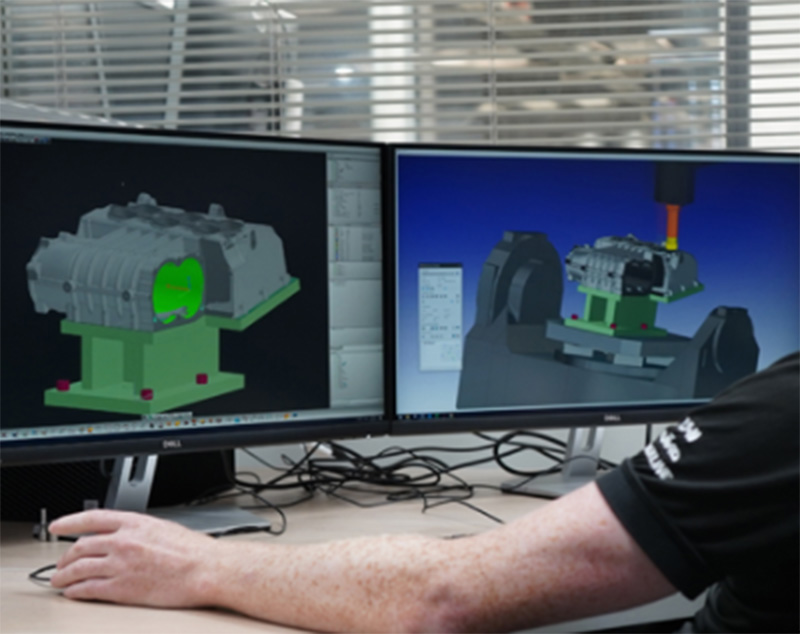Casting Process

Harrop Casting Technologies specialise in non ferrous castings. In-house heat treatment and shot peening is applied to all our aluminium products.
Continuous expansion in the die casting field includes low pressure die casting of aluminium alloys and magnesium.

Tooling design
Pattern making is the process of making a ‘model’ of a part to be cast. The pattern is a replica of the part to be produced but with shrinkage and machining allowances added on along with any necessary runners and risers for pouring the casting. The Pattern Maker / Tooling Designer usually makes the pattern from wood but for higher volume cast parts they are sometimes made from metal or composite resins.
Patterns are commonly used for sand casting or shell moulding but patterns can also be used for vacuum forming tooling, fiberglass moulds, ceramic casting and prototyping. In the case of sand casting, the pattern is used to pack the sand in and around to form the mould cavity. For shell moulding, the metal pattern is used to form the thin shell moulds.
At Harrop Casting Technologies, a variety of processes are available in-house via Harrop Engineering such as CNC patterns and core-boxes, Conventional Patterns and Rapid Prototyping in many forms with our trusted and proven outsourced partner programs such as Lost Wax, Selective Laser Sintering (SLS), Fused Deposit modeling (FDM), Stereo lithography (SLA), Laminated Object Manufacturing (LOM) and 3D Printing. Harrop Casting Technologies focuses on getting your products to market in the best possible timeframe, producing world-class castings.

Moulding process
Sand casting is a process commonly used to produce castings in ferrous metals, aluminium, magnesium, brasses and bronzes. Sand castings are produced by making a sand mould by packing sand and binding agents around a pattern. The mould is made in 2 parts called the ‘cope’ and ‘drag’. The pattern is removed, leaving the 2 part cavity. Cores and inserts can also be made from sand and placed in the mould to produce undercuts, recesses, holes and channels.
Molten metal is poured into the sand mould and solidified. The casting is removed by breaking away the sand mould in a process called ‘shaking out’ which can be automated. The sand casting process itself can also be automated for high volume ferrous casting although die casting is typically used for high volume non-ferrous casting.
Harrop Casting Technologies provides a niche market of the highest quality aluminium castings primarily for the automotive industry using aeroespace methods and technologies. Highly accurate sand moulds and cores are made with the latest phenolic and polyurethane resins systems in combination with locally sourced high grade fine silca sand producing the external and internal shape of the casting required.

Melting process
Aluminium Alloy primary ingot is supplied directly from Rio Tinto / Comalco or Sims Aluminium. Each bar is individually bar-coded for traceability. All metal specifications data sheets exceed or fall well within Australian Standards AS-1874 2000.
Melting occurs in Electric Resistance furnaces all built by Furnace Engineering Australia. These furnaces provide molten metal to be on call 24 hours a day 7 days a week with temperatures and processes recorded via online data acquisition.
Rotary degassing and flux injection of molten alloy guarantees premium cleanliness of every batch melted at Harrop Casting Technologies. Thus removing all dross, impurities and containants possible, giving us the confidence you receive nothing less than perfection.

Heat treatments
Primarily CC601 or A356 are used and Heat treated to T1, T4, T5, T6, T7, for assigned applications. Harrop Castings Technologies are more than happy to discuss the best outcome for your application. Many hours of research in partnership with CSIRO have resulted in proven process controls. Each casting is individually date stamped and carries the Harrop insignia logo of quality.
Harrop Casting Technologies utilise a drop-quench artificially ageing furnace purpose-built for Harrop by Furnace Engineering Australia. Temperature is controlled to plus or minus 1 deg with a desired hardness result plus or minus 5 Brinell.

After casting finishing
All castings are carefully hand finished to remove flashing during the casting process. Each casting is then shot blasted with stainless steel shot to give the casting a uniform texture and finish. Polishing is also available.

Industry involvement
Harrop Casting Technologies has been a proud member of the Australian Foundry Institute since opening. Harrop Casting Technologies also supports the industry with onsite training of all Pattern Maker and Moulding Apprentice training in Victoria.

Casting green in a safe environment
Harrop Casting Technologies supports a green future with the guidance of Environment Protection Authority Victoria, Greenchip Pty Ltd, and A.F.I Victoria in best practice recycling and energy usage. Harrop Casting Technologies prides itself by abiding by all Worksafe laws and regulations.

